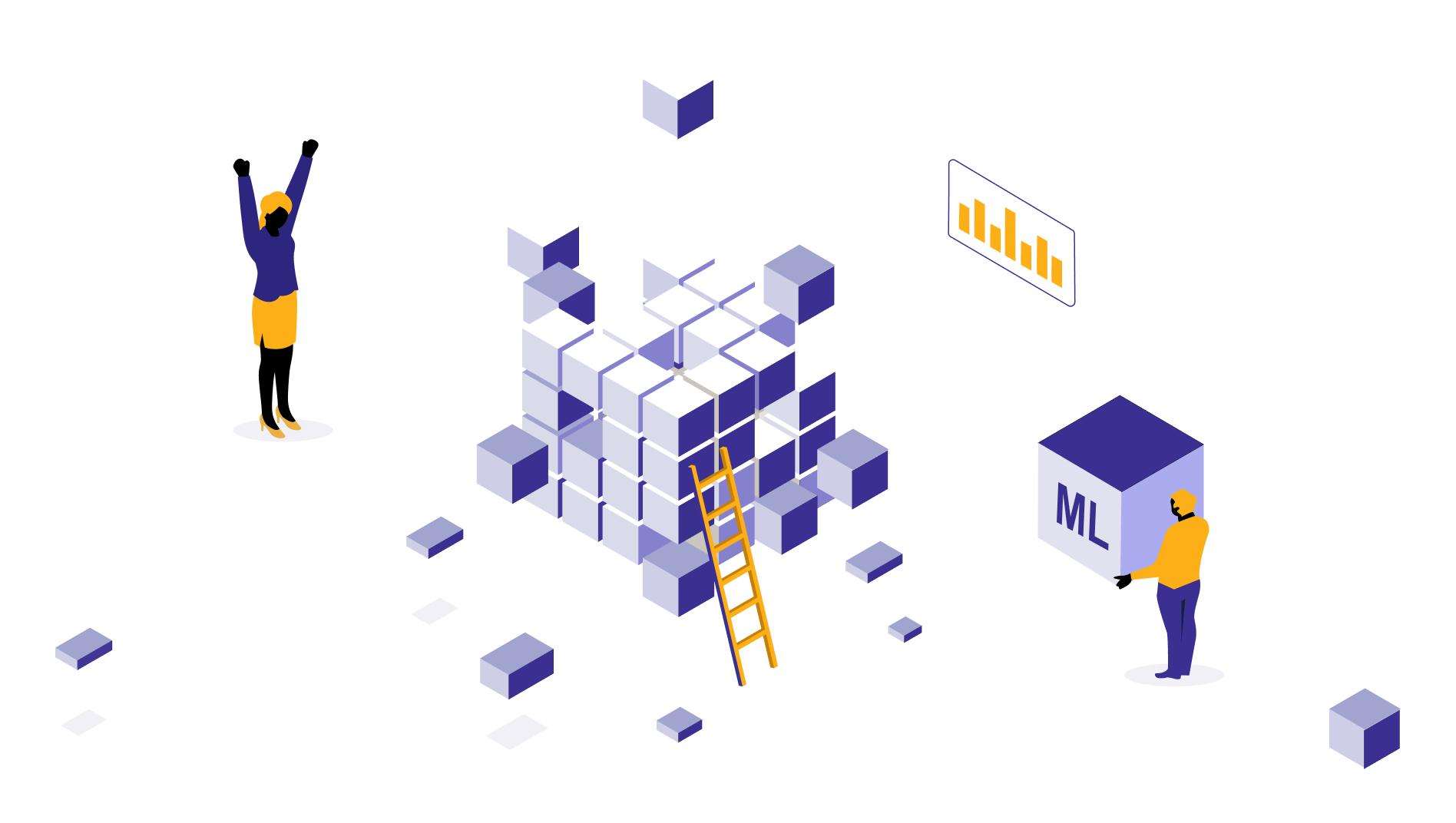Reverse ETL: Use cases & tools to consider for your business
How does the concept of reverse ETL work and how is it different from the ETL process? The blog explains this and its real-time applications and market tools. The final section mustn’t be missed for how it explains if reverse ETL is a profitable investment for your business.

Suresh
May 8, 2024 |
6 mins

What is reverse ETL?
Imagine a simple math problem like 4 + 4 = 8. You add both and the outcome is 8. Can you go the other way around, split 8 into two values, and still form an equation? You can. That’s how reverse ETL works. You route the data stored in warehouses back to applications where it came from. After being transformed into a suitable format. So, reverse ETL is a standard ETL data flow process, in the reverse direction.
For example, data collected from CRM, sales, and marketing applications is aggregated, transformed, and stored in a data warehouse, which works as a customer 360. Being the single source of truth (SSOT), the customer 360 has many golden insights, which sales, marketing, and support teams could benefit from. With reverse ETL, the former applications receive real-time insights from the latter, the SSOT.
Now, why would someone do that? Here is why. It’s good you generate real-time analytics. Reverse ETL makes its logistics simple - making these insights available to end-users wherever they can apply them. In the above example, a salesperson handling CRM will know how his lead generation efforts are turning out, without looking elsewhere.
How does reverse ETL differ from ETL?
Firstly, what is Extract Transform Load, aka ETL? ETL (Extract, Transform, and Load) is the process of collecting data from one or various sources, transforming and standardizing them in a staging area, and loading them into a repository (a data warehouse). The repository makes data value extraction happen, fueling analytics, visualization, and artificial intelligence solutions. Some best ETL tools in market include Fivetran, Talend, Medallion, Azure data factory, etc. Reverse ETL is the exact opposite of the above process.
Here, you extract data from the repository. You transform the data, make it suitable to be used by end users, and load them into applications where these insights can be helpful. There is also ETL vs. ELT difference, where the order of extract, transform, and load process changes. ETL loads the transformed data into the destination, but in ELT, transformation happens at last in the destination.
While ETL and ELT are both common processes, reverse ETL isn’t much, as it’s more complex than its counterparts.
How does reverse ETL work?
The source that contains transferable data can be a data storage or a business intelligence platform. Remember that you don’t have the entire reporting data stored there. This is where the extraction process begins. You should query the data tables you require using relevant tools like SQL.
This data cannot be directly loaded into SaaS applications like marketing tools, CRM, ticket management platforms, etc. The reason is that these tools don’t support the format of the extracted data.
Hence the isolated and copied data is transformed to a suitable format, which is then ingested into any downstream application for activation and analysis. This ingestion can be real-time or batch processing. A typical reverse ETL process works this way allowing way for data operationalization to happen. This way, your marketing and sales team could get instant access to business analytics, apply them to your departmental workflows, and bring sureshot, impactful changes to their work outcomes.
Difference between CDP and reverse ETL
CDP is a customer data platform, what marketers use to have a 360 view of their customers. Built with identity resolution capabilities, these tools can integrate data from disparate systems and present it together in one place.
CDP platforms are often confused with the reverse ETL process. But they are entirely different concepts.
Customer data platforms collect customer details from marketing platforms, clean them up, and present a unified view without identity disputes. It helps marketers, small business owners, and salespersons to pick up and combine the trail customers leave behind so they can provide more personalized experiences. Reverse ETL is different from CDP as the former is all about de-centralizing the truth and distributing it back to third-party applications for further usage.
One obvious difference in CDP vs reverse ETL is the former is more of a marketing application set up and used entirely by them while ETL brings data teams into the picture.
Any organization can use CDP, only organizations with matured data architecture can employ reverse ETL.
Use cases of reverse ETL
It’s apparent that reverse ETL can make magic happen for marketing teams. It can do more. Here are the other applications of reverse ETL.
Marketing optimization
Marketing efforts often end with a closed loop with fewer ways to measure ROI. Reverse ETL breaks the loop and allows them to see beyond so they can find out what’s promising for their goals.
Reverse ETL empowers them to run focused campaigns, bring personalization to the core, and improve ROI in all ways.
Sales
Sales teams require more inclusive data to measure their effectiveness and need data from finance. Example: average revenue per user, customer lifetime value, churn, etc. Making these metrics available within CRM will help the sales team improve their performance, readjust goals, and engage with customers in the right way.
Personalization
Personalization goes beyond addressing customer with their name. But with siloed customer engagement, you can’t move forward with personalized messaging, targeting, and customer support. For example, a customer browsing a product can receive an exclusive and personalized ad campaign or a push notification.
Product development
Product teams need the utmost insights from every team - customer support, marketing, and sales. They could receive these with the help of reverse ETL, tapping into real conversations with customers, feedback on new features, complaints about bugs, and more.
Reverse ETL tools to consider
You can choose a reverse ETL tool based on integration options, features available, pricing, sync options, etc. Some ready-to-use tools available on the market for reverse ETL are:
Hightouch
Hightouch is a drag-and-drop platform for setting up custom pipelines from data sources like Snowflake into marketing, and sales platforms. No coding or engineering required. This is more of a CDP and Customer 360 tool for marketing teams with powerful features like identity resolution.
Census
Claimed to be one of the fastest reverse ETL platforms, Census can be used to fuel your data activation. It’s packed with many useful features like the ability to create alerts, real-time syncing, 200+ integrations, and more.
Workato
Workato is an automation platform that allows you to create workflows and set triggers for any business function. With tons of integrations and connectors available, you can connect sources with destinations and set up custom triggers. That’s how Workato allows reverse ETL and many other integration functions.
Rudderstack
Rudderstack is another CDP platform that comes with customer profiles, reverse ETL and event integration options. It offers no code reverse ETL experience for seamless and real-time reverse ETL workflows. It’s one tool to unify marketing, sales, and product teams with data teams.
Does my business require reverse ETL?
It’s already established above that reverse ETL isn’t for all businesses. But every business needs it at some point. Confusing, right?
You wanted to have a single version of truth that your entire organization can abide by. Every team receives their share of truth in the form of reports or queries whenever they require. Yet, this isn’t a smooth sailing process. Nor does the data get fully operationalized, giving every ounce of value it can.
This is why you need reverse ETL where you share actionable insights on time in an environment, they are already familiar with.
Centralized warehouses still cause data siloes
Why lock away useful information within warehouses and data platforms like Microsoft Fabric, Snowflake, etc., when it can drive insights back into your operational systems?! Why limit your teams’ perspectives when data from other sources could bring more clarity to their decisions? Reverse ETL reverses these situations, bridges the gap, and breaks the siloes, giving a new meaning to an interoperable environment.
While reverse ETL comes with challenges like increasing data volumes, too many applications, and data governance, it’s still a powerful concept if executed right.
Reliable pipelines. Faster syncs. Smarter activation. Build it with our data pipelines and ETL solutions.

by Suresh
Suresh, the data architect at datakulture, is our senior solution architect and data engineering lead, who brings over 9 years of deep expertise in designing and delivering data warehouse and engineering solutions. He is also a Certified Fabric Analytics Engineer Associate, who plays a major role in making us one of the early adopters of Fabric. He writes in words whatever he delivers with precision to his clients, consistently voicing out trends and recent happenings in the data engineering sector.



